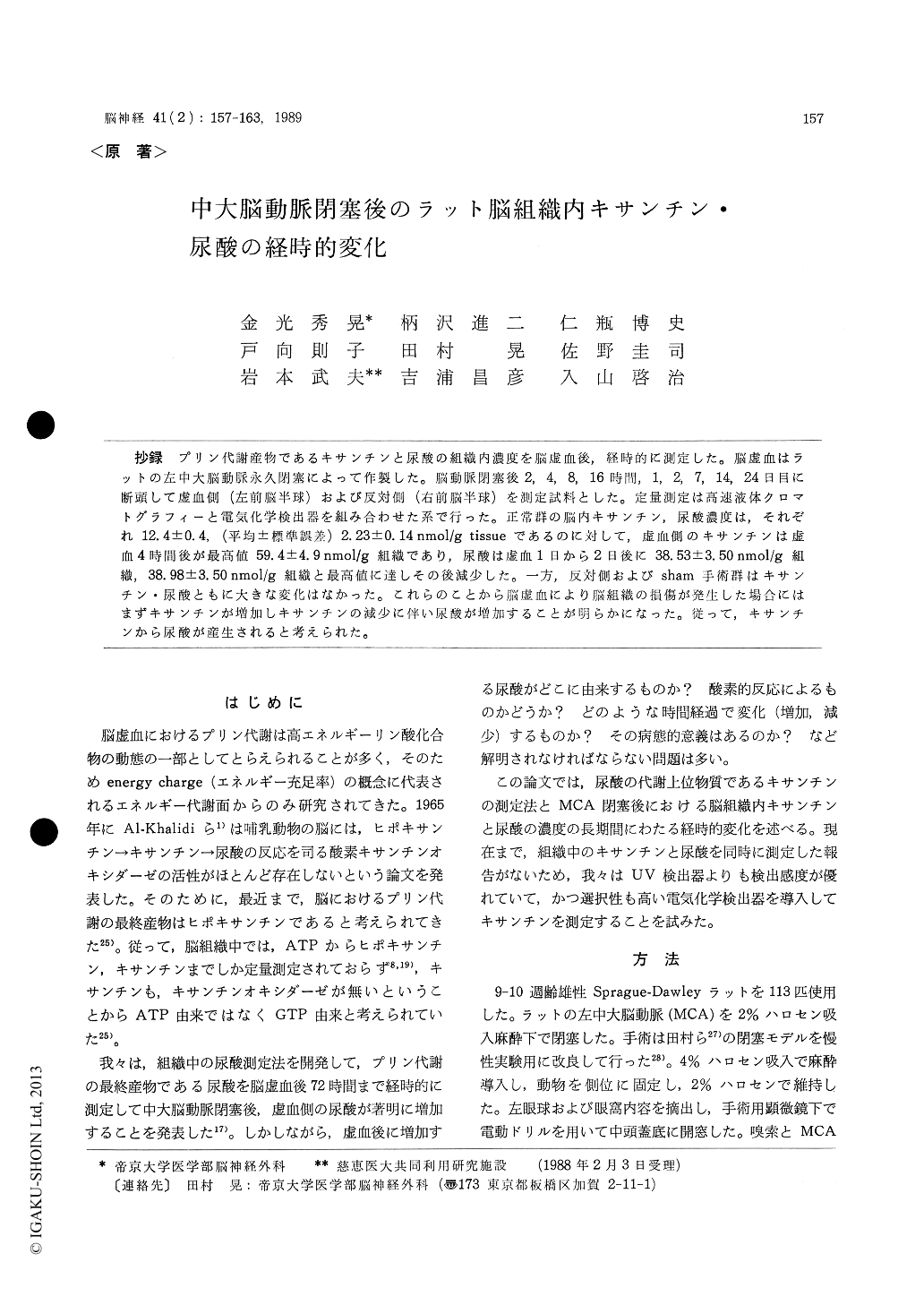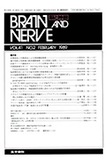Japanese
English
- 有料閲覧
- Abstract 文献概要
- 1ページ目 Look Inside
抄録 プリン代謝産物であるキサンチンと尿酸の組織内濃度を脳虚血後,経時的に測定した。脳虚血はラットの左中大脳動脈永久閉塞によって作製した。脳動脈閉塞後2, 4, 8, 16時間,1, 2, 7, 14, 24日目に断頭して虚血側(左前脳半球)および反対側(右前脳半球)を測定試料とした。定量測定は高速液体クロマトグラフィーと電気化学検出器を組み合わせた系で行った。正常群の脳内キサンチン,尿酸濃度は,それぞれ12.4±0.4,(平均±標準誤差)2.23±0.14nmol/g tissueであるのに対して,虚血側のキサンチンは虚血4時間後が最高値59.4±4.9nmol/g組織であり,尿酸は虚血1日から2日後に38.53±3.50nmol/g組織,38.98±3.50nmol/g組織と最高値に遠しその後減少した。一方,反対側およびsham手術群はキサンチン・尿酸ともに大きな変化はなかった。これらのことから脳虚血により脳組織の損傷が発生した場合にはまずキサンチンが増加しキサンチンの減少に伴い尿酸が増加することが明らかになった。従って,キサンチンから尿酸が産生されると考えられた。
Xanthine and uric acid, products of purine meta-bolism, were measured by reversed-phase high-per-formance liquid chromatography (HPLC) with elec-trochemical detection in rat forebrain following focal cerebral ischemia. Focal cerebral ischemia was induced in the rat by permanent occlusion of the left middle cerebral artery (MCA). Sprague-Dawley rats were anesthetized with halothane in-halation and left MCA was occluded via trans-retro-orbital approach. Normal and sham-operatedrats were used as control animals. The animals were decapitated 2(MCA=5, Sham=5), 4(MCA= 7, Sham=6), 8(MCA=5, Sham=5), and 16 (MCA =6, Sham=6) hours or 1 (MCA=5, Sham=5), 2(MCA=6, Sham=6), 7 (MCA=7, Sham=6), 14(MCA=6, Sham=5), and 28 (MCA=7, Sham=5) days after the operation. The brains were re-moved and devided into right and left hemisphere. Each hemisphere was homogenized and centri-fuged. The supernates were filtrated with mem-brane filter. An aliquot of the filtrate was used for measurement of xanthine and uric acid in both of the ischemic and contralateral hemisphere by a HPLC system.
In the normal group, xanthine and uric acid in the brain was 12.4±0.4 and 2.2±0.1 nmol/g tissue (mean±SEM), respectively. In the ischemic hemi-sphere, xanthine incresed up to 57.7±5.2 nmol/gtissue 2 hours after MCA occlusion and reached a maximum value of 59.42±4.91 nmol/g tissue 4 hours following the induction of ischemia. Xan-thine level was still high 8 hours after ischemia and then rapidly decresed to the normal value at day 2. Uric acid increased up to 38. 53±7.42 nmol/g tissue 1 day after ischemia and reached a maximum value of 38.98±3.50 nmol/g tissue 2 days after occlusion. The level of uric acid in the ischemic hemisphere gradually decreased, although the value was still significantly high at day 28. The changes of xanthine and uric acid in the op-posite side and in sham-operated forebrain was unremarkable. The present experiment suggests that, in ischemic forebrain, uric acid is produced through xanthine as a product of purine meta-bolism.

Copyright © 1989, Igaku-Shoin Ltd. All rights reserved.


